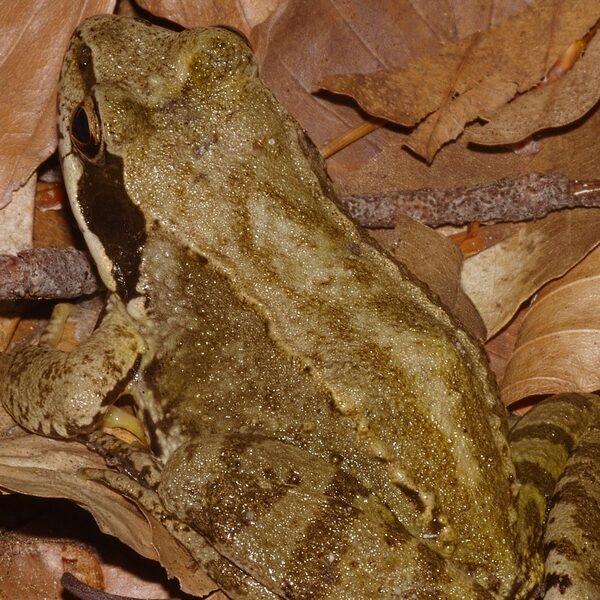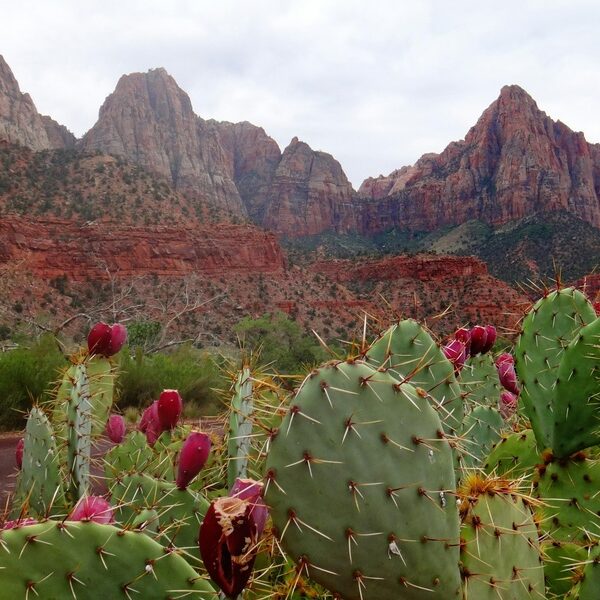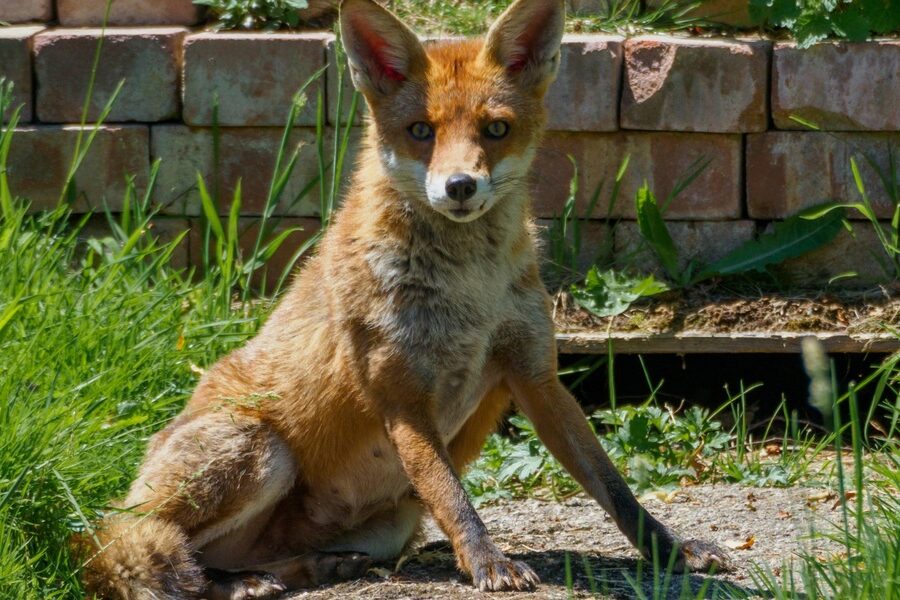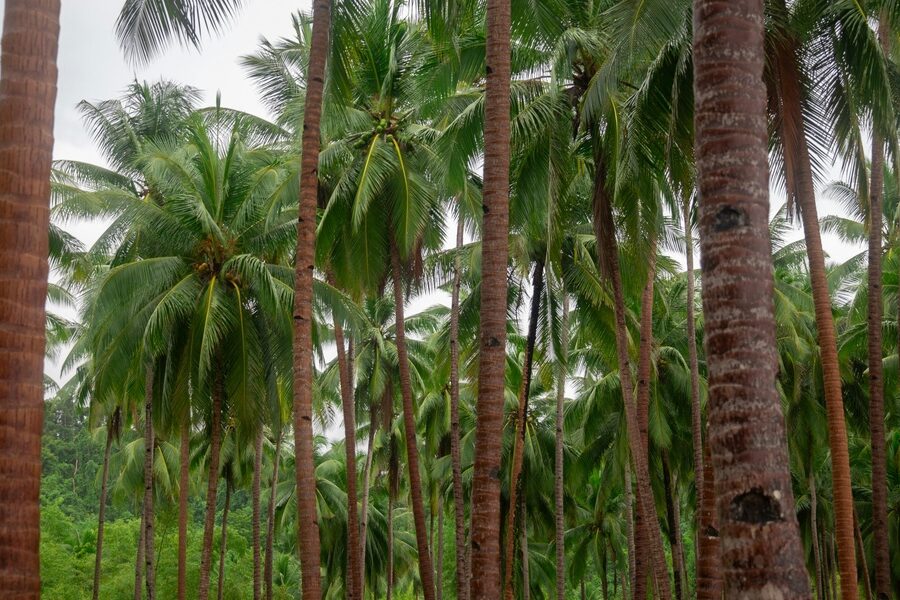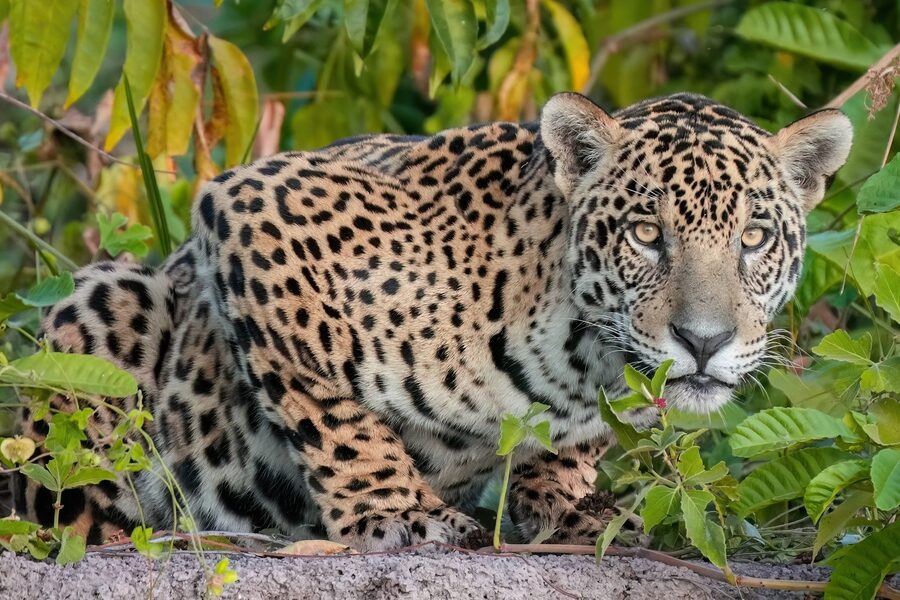From coastal marshes and Everglades swamps to isolated mountain lakes and Mojave scrub, the United States contains habitats that harbor species found nowhere else on Earth. Many of these animals occupy very specific ranges or niche environments, so learning where to look and what to expect makes a big difference.
There are 40 Animals Only Found in the United States, ranging from Alligator Snapping Turtle to Yosemite Toad. For each species you’ll find below the Scientific name, Range (states/regions), Conservation status, along with a short habitat note to help you understand occurrence and protection needs — you’ll find below.
Are any of these species endangered or legally protected?
Yes — conservation status varies across the list, from species of least concern to federally listed threatened or endangered animals; state listings can add protections too. Habitat loss, water management changes, invasive species, and disease are common threats, so check the U.S. Fish and Wildlife Service or your state wildlife agency for current status and recovery actions.
What’s the best way to see these animals without harming them?
Use public lands and permitted guided tours, visit during appropriate seasons, keep distance, avoid handling or disturbing nests, and follow local rules and permit requirements; if you record a sighting, report it to local biologists or citizen science platforms rather than moving or removing the animal.
Animals Only Found in the United States
| Common name | Scientific name | Range (states/regions) | Conservation status |
|---|---|---|---|
| Island Fox | Urocyon littoralis | Channel Islands, CA | Near Threatened |
| Black-footed Ferret | Mustela nigripes | Great Plains (reintroduced) | Endangered |
| Olympic Marmot | Marmota olympus | Olympic Mountains, WA | Least Concern |
| Florida Panther | Puma concolor coryi | South Florida | Endangered |
| Key Deer | Odocoileus virginianus clavium | Florida Keys, FL | Endangered |
| Pygmy Rabbit | Brachylagus idahoensis | Great Basin region | Least Concern |
| Red Wolf | Canis rufus | Northeastern North Carolina | Critically Endangered |
| Utah Prairie Dog | Cynomys parvidens | Southwestern Utah | Threatened |
| White-tailed Prairie Dog | Cynomys leucurus | WY, CO, UT, MT | Least Concern |
| Florida Scrub-Jay | Aphelocoma coerulescens | Florida | Vulnerable |
| Island Scrub-Jay | Aphelocoma insularis | Santa Cruz Island, CA | Near Threatened |
| Yellow-billed Magpie | Pica nuttalli | California | Least Concern |
| Gunnison Sage-Grouse | Centrocercus minimus | Colorado and Utah | Endangered |
| Red-cockaded Woodpecker | Leuconotopicus borealis | Southeastern U.S. | Near Threatened |
| McKay’s Bunting | Plectrophenax hyperboreus | Alaska (Bering Sea) | Near Threatened |
| Hawaiian Goose (Nene) | Branta sandvicensis | Hawaiian Islands | Vulnerable |
| Alligator Snapping Turtle | Macrochelys temminckii | Southeastern U.S. | Vulnerable |
| Gopher Tortoise | Gopherus polyphemus | Southeastern U.S. | Vulnerable |
| Florida Sand Skink | Plestiodon reynoldsi | Central Florida | Threatened |
| Coachella Valley Fringe-toed Lizard | Uma inornata | Coachella Valley, CA | Endangered |
| Black-knobbed Map Turtle | Graptemys nigrinoda | Alabama and Mississippi | Least Concern |
| Eastern Diamondback Rattlesnake | Crotalus adamanteus | Southeastern U.S. | Least Concern |
| Hellbender | Cryptobranchus alleganiensis | Eastern U.S. | Near Threatened |
| Red Hills Salamander | Phaeognathus hubrichti | Southern Alabama | Threatened |
| Barton Springs Salamander | Eurycea sosorum | Austin, TX | Endangered |
| Houston Toad | Anaxyrus houstonensis | East-central Texas | Endangered |
| Yosemite Toad | Anaxyrus canorus | Sierra Nevada, CA | Vulnerable |
| Dusky Gopher Frog | Lithobates sevosus | Mississippi and Louisiana | Critically Endangered |
| California Tiger Salamander | Ambystoma californiense | California | Vulnerable |
| Devils Hole Pupfish | Cyprinodon diabolis | Nevada | Critically Endangered |
| Apache Trout | Oncorhynchus apache | Arizona | Threatened |
| Gila Trout | Oncorhynchus gilae | New Mexico and Arizona | Threatened |
| Candy Darter | Etheostoma osburni | Virginia and West Virginia | Endangered |
| Snail Darter | Percina tanasi | Tennessee River tributaries | Threatened |
| Roanoke Logperch | Percina rex | Virginia and North Carolina | Endangered |
| Pecos Gambusia | Gambusia nobilis | Texas and New Mexico | Vulnerable |
| Valley Elderberry Longhorn Beetle | Desmocerus californicus dimorphus | Central Valley, CA | Threatened |
| Hawaiian Happy-face Spider | Theridion grallator | Hawaiian Islands | Not Evaluated |
| Behren’s Silverspot Butterfly | Speyeria zerene behrensii | Coastal Northern California | Endangered |
| Phantom Cave Snail | Cochliopa texana | Near Fort Worth, TX | Critically Endangered |
Images and Descriptions
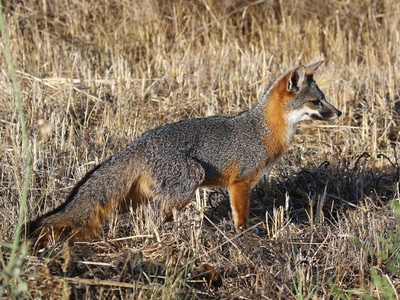
Island Fox
A tiny, cat-sized fox found only on six of California’s Channel Islands. Each island has its own unique subspecies, making it a remarkable example of rapid evolution and island dwarfism from its mainland gray fox ancestor.

Black-footed Ferret
Once thought extinct, this slinky predator is North America’s only native ferret. It depends entirely on prairie dog colonies for food and shelter and is a major conservation success story, brought back from just 18 individuals.

Olympic Marmot
A large, sociable ground squirrel found only in the high-elevation meadows of Washington’s Olympic Mountains. They live in colonies, greet each other by touching noses, and are the official state endemic mammal.
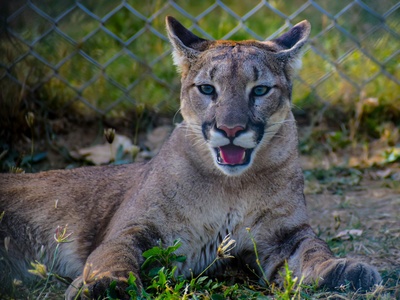
Florida Panther
This rare subspecies of cougar is a conservation icon, adapted to the swamps and forests of South Florida. It’s the only puma population found east of the Mississippi River, with fewer than 250 individuals remaining in the wild.
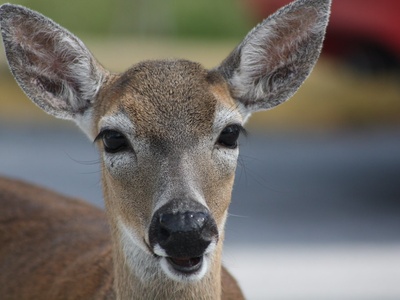
Key Deer
The smallest subspecies of North American white-tailed deer, standing only about 2.5 feet tall at the shoulder. This miniature deer is found exclusively in the Florida Keys, where it has adapted to island life.
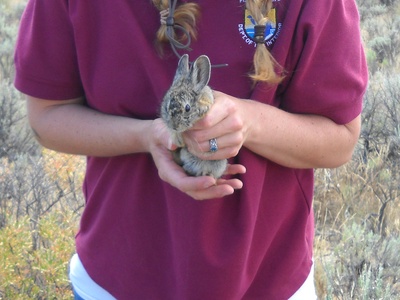
Pygmy Rabbit
North America’s smallest rabbit, weighing less than a pound. It is one of only two rabbit species in North America that digs its own burrows and relies on dense, tall sagebrush for both food and shelter from predators.
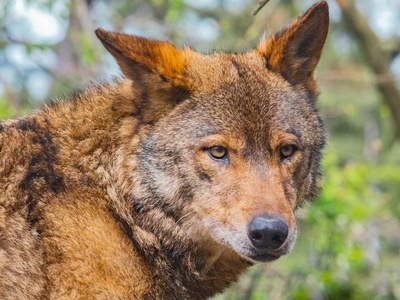
Red Wolf
One of the world’s most endangered canids, this wolf is native to the southeastern U.S. A wild reintroduced population exists only in North Carolina. It is generally smaller than a gray wolf and has a distinctive reddish-brown coat.
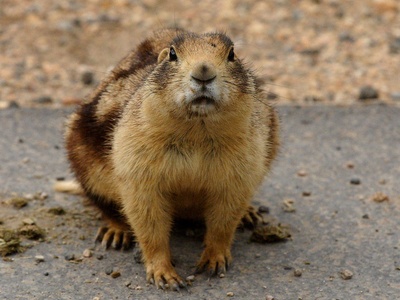
Utah Prairie Dog
The smallest of the five prairie dog species, it is found only in the grasslands of southwestern Utah. These social rodents live in complex underground burrows called “towns” and are considered a keystone species for their ecosystem.

White-tailed Prairie Dog
Found in the basins of the Rocky Mountains, this prairie dog is distinguished by its short, white-tipped tail. Unlike its black-tailed cousin, its population is more scattered across high-elevation shrublands and grasslands.

Florida Scrub-Jay
The only bird species living entirely within the state of Florida. This smart, social jay lives in family groups in fire-dependent scrub oak habitats and is known for being remarkably bold and unafraid of humans.

Island Scrub-Jay
Found only on Santa Cruz Island, one of California’s Channel Islands, this bird has one of the smallest ranges of any North American bird species. It is larger and has a deeper blue color than its mainland relatives.
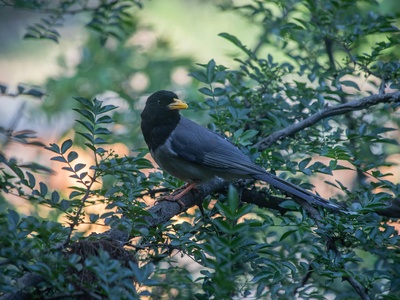
Yellow-billed Magpie
A striking black-and-white bird with a bright yellow bill and eye-patch, found only in California’s Central Valley and nearby foothills. These intelligent birds are highly social, living and nesting together in colonies.
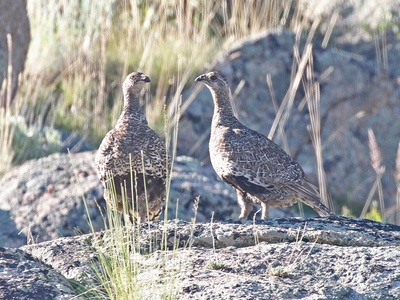
Gunnison Sage-Grouse
A large ground-dwelling bird recognized as a new species in 2000. It’s found only in a small region of Colorado and Utah, where males perform elaborate strutting displays on communal breeding grounds called leks.
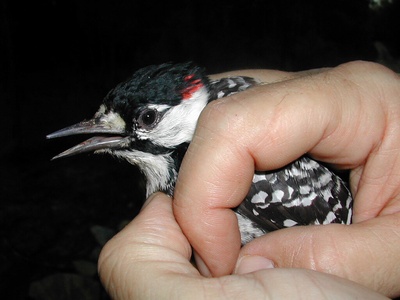
Red-cockaded Woodpecker
This small woodpecker is unique for excavating its nesting cavities exclusively in living, old-growth pine trees. It lives in family groups in the fire-maintained pine savannas of the Southeast, from Virginia to Texas.

McKay’s Bunting
One of North America’s rarest nesting birds, this mostly white songbird breeds only on two remote islands in the Bering Sea. It winters nearby on the western coast of Alaska, making its entire life cycle a uniquely Alaskan affair.
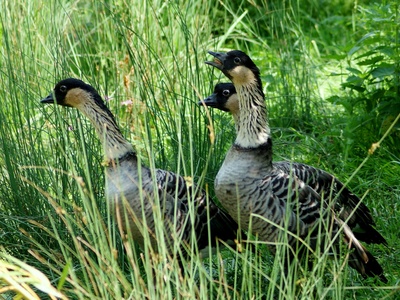
Hawaiian Goose (Nene)
Hawaii’s official state bird, the Nene, is a land-dwelling goose adapted for life on volcanic slopes with less webbing on its feet. It was once near extinction but has been brought back through captive breeding programs.
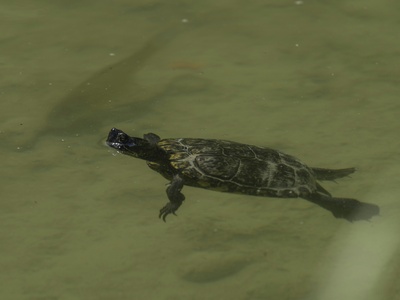
Alligator Snapping Turtle
The largest freshwater turtle in North America, this prehistoric-looking giant has a powerful bite and a worm-like lure on its tongue to attract fish. It inhabits deep rivers, lakes, and swamps in the southeastern United States.
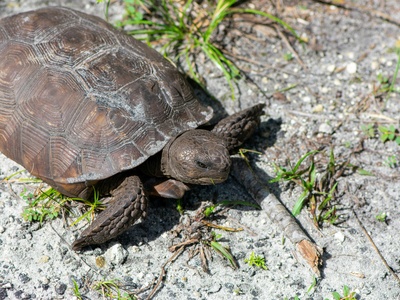
Gopher Tortoise
A keystone species of the longleaf pine ecosystem, this tortoise digs deep burrows that provide shelter for over 350 other species. It’s found in sandy, dry habitats from South Carolina to eastern Louisiana.

Florida Sand Skink
A rare, tiny lizard that “swims” through the sand in central Florida’s ancient sandy ridges. It has lost its external ears and has tiny, almost useless legs, showing incredible adaptation to its subterranean life.

Coachella Valley Fringe-toed Lizard
This lizard is perfectly adapted to life in fine, windblown sand dunes. Its specialized fringe-toed feet allow it to run quickly across loose sand, and it can dive headfirst into the sand to escape predators.
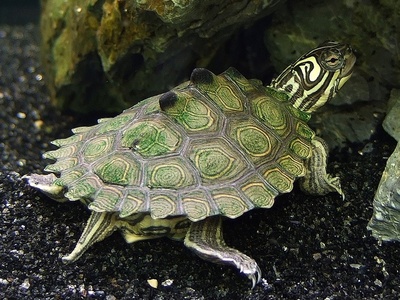
Black-knobbed Map Turtle
Named for the distinct black knobs on its ridged shell, this small aquatic turtle is found only in the Tombigbee and Black Warrior River systems. It spends most of its life in the water, basking on logs and snags.

Eastern Diamondback Rattlesnake
The heaviest venomous snake in the Americas, this pit viper is native to the coastal plains of the Southeast. It is a keystone species, preying on rodents and serving as prey for others, but its populations are declining.
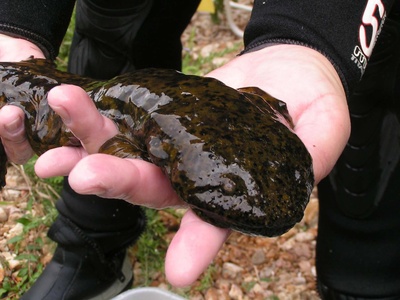
Hellbender
One of the world’s largest salamanders, the Hellbender is a fully aquatic amphibian that can reach over two feet long. Often called a “snot otter,” it breathes through its wrinkly skin and lives under large rocks in cool, clear streams.

Red Hills Salamander
Alabama’s official state amphibian lives in a tiny, 60,000-acre area and is the only species in its genus. This lungless salamander lives in burrows on steep ravine slopes and never fully emerges, waiting at the entrance for prey.
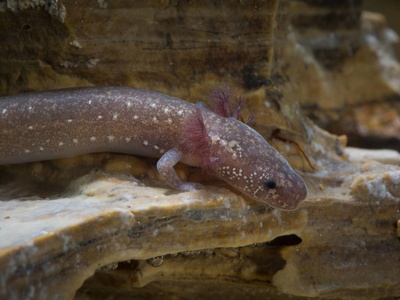
Barton Springs Salamander
This tiny, lungless salamander is only found in the waters of Barton Springs, a group of natural springs in Austin, Texas. Its entire world consists of these few outlets, making it extremely vulnerable to water quality changes.

Houston Toad
One of the first amphibians to be federally protected, the Houston Toad is now found in only a few Texas counties. Its distinctive, high-pitched trilling call is a classic sound of the pine and oak forests where it breeds.
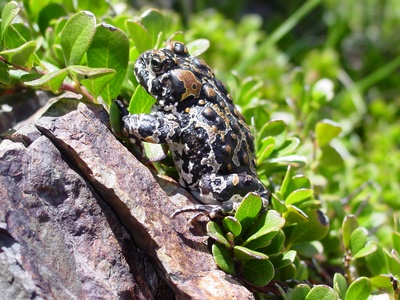
Yosemite Toad
This toad lives exclusively in the high-elevation wet meadows and forests of California’s Sierra Nevada mountain range, typically between 6,400 and 11,300 feet. Males have a distinct, musical trill they use to attract mates after the snow melts.

Dusky Gopher Frog
One of the most endangered frogs in North America, with only about 100 adults left in the wild. It depends on temporary ponds in longleaf pine forests for breeding and spends most of its life underground in burrows.

California Tiger Salamander
This large, striking black-and-yellow salamander is found primarily in the grasslands and foothills of central California. It spends most of its life underground in rodent burrows, emerging only to breed in seasonal vernal pools.

Devils Hole Pupfish
Perhaps the world’s rarest fish, this tiny, iridescent blue pupfish lives in a single, deep, water-filled cavern in Death Valley National Park. Its entire population often numbers less than 200 individuals, confined to a small rock shelf.
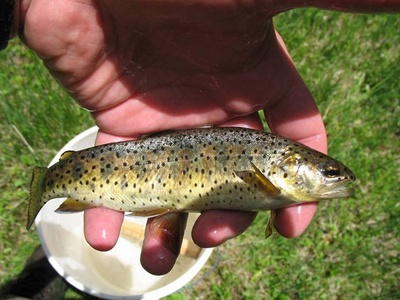
Apache Trout
Arizona’s state fish is a stunning, golden-yellow trout with dark spots, native only to the clear, cold streams of the White Mountains. Conservation efforts have brought it back from the brink of extinction.
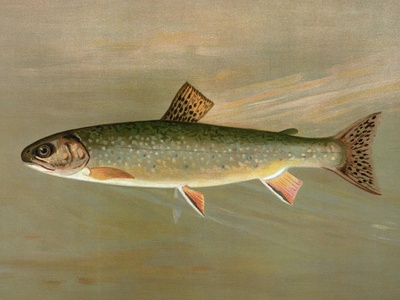
Gila Trout
One of the rarest trout in the U.S., this colorful fish is native to the high-elevation headwaters of the Gila River system. After being nearly wiped out, recovery efforts have led to its downlisting from endangered.
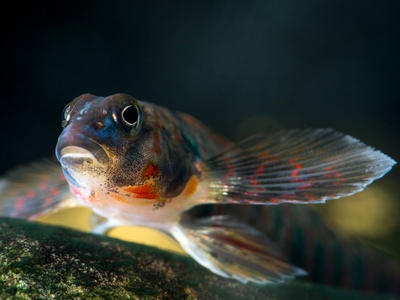
Candy Darter
One of North America’s most colorful freshwater fish, the male candy darter displays brilliant turquoise, red, and orange hues. It is found only in the clean, fast-flowing riffles of the upper New River drainage.

Snail Darter
Famous for its role in a 1978 Supreme Court case that halted a dam project, this small fish was once a symbol of the Endangered Species Act. It lives in clean gravel shoals in the Tennessee River system.
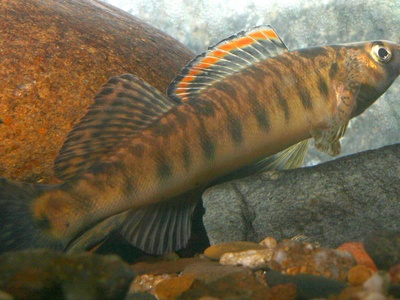
Roanoke Logperch
A large, distinctive darter known for its habit of flipping over stones with its snout to find food. It is found only in the gravelly runs of the Roanoke and Chowan River systems, where it is threatened by sediment pollution.
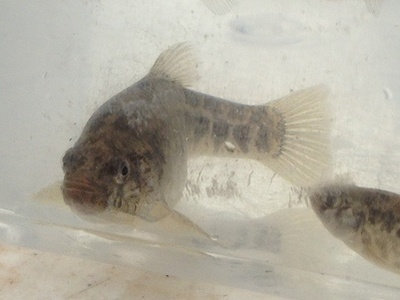
Pecos Gambusia
This small, live-bearing fish is adapted to harsh desert conditions. It survives in a handful of isolated springs and sinkholes in the Pecos River basin, making it vulnerable to groundwater depletion and habitat loss.
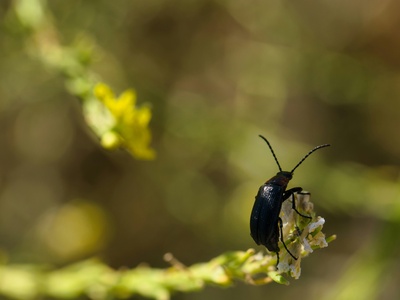
Valley Elderberry Longhorn Beetle
This striking beetle is completely dependent on elderberry shrubs in California’s Central Valley for its entire life cycle. The larvae bore into the stems of the plant, where they develop for one to two years before emerging as adults.

Hawaiian Happy-face Spider
This tiny spider, native to four Hawaiian islands, is famous for the remarkable patterns on its abdomen that often resemble a smiling face or a cartoon character. The patterns are highly variable, with each spider having a unique “design.”

Behren’s Silverspot Butterfly
This beautiful orange-and-black butterfly lives only on a single, fog-drenched coastal prairie in Sonoma County. Its caterpillars feed exclusively on the western dog violet, making it extremely vulnerable to habitat loss.

Phantom Cave Snail
This tiny aquatic snail is known to exist only in the water flowing from the Phantom Cave spring system. Its entire survival is linked to the health of this single aquifer, making it a critical indicator of water quality.

